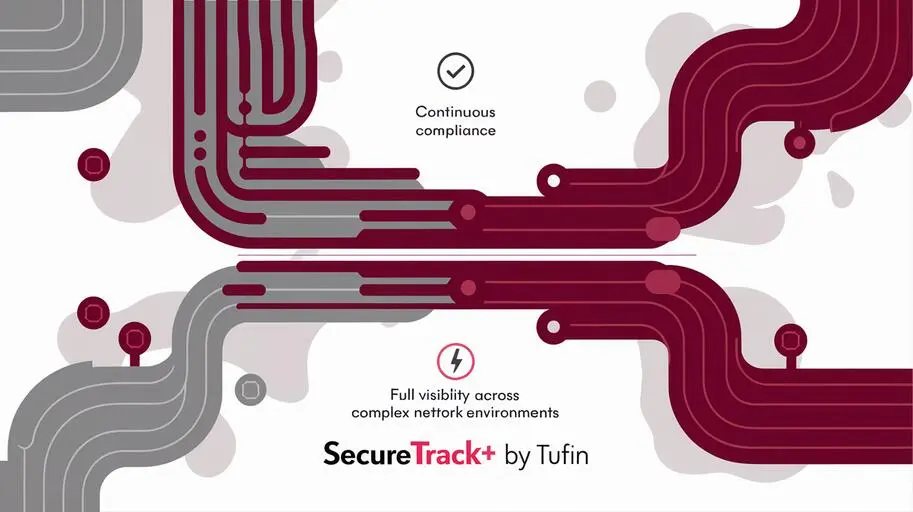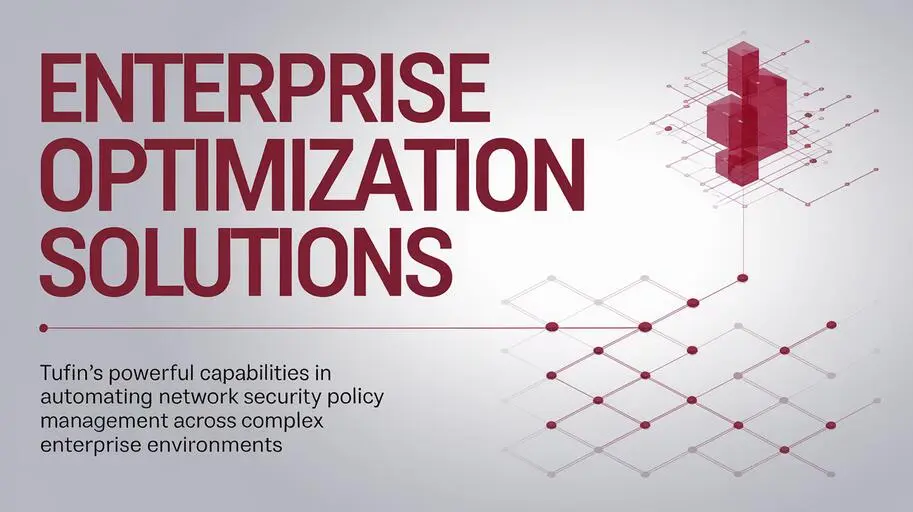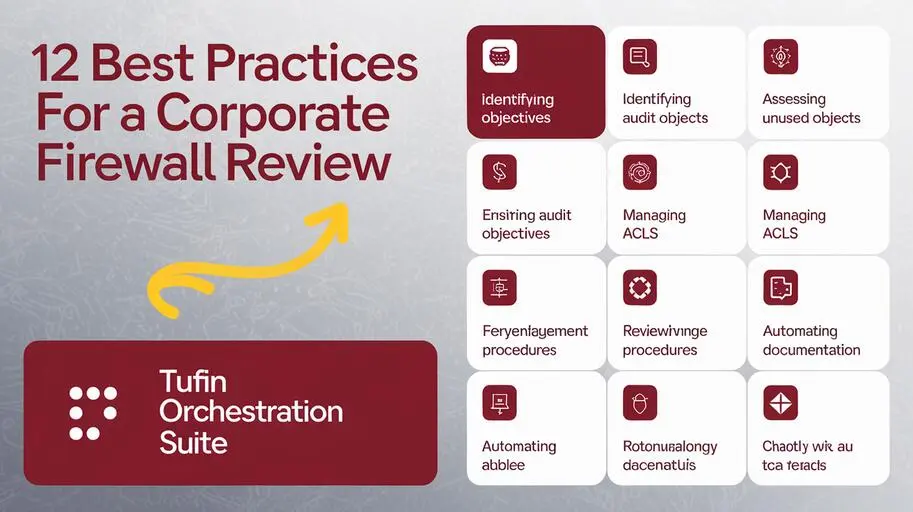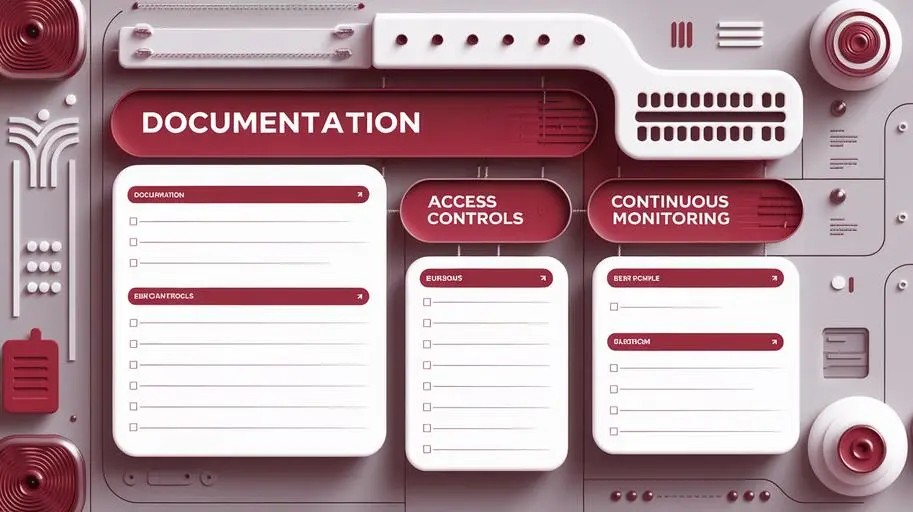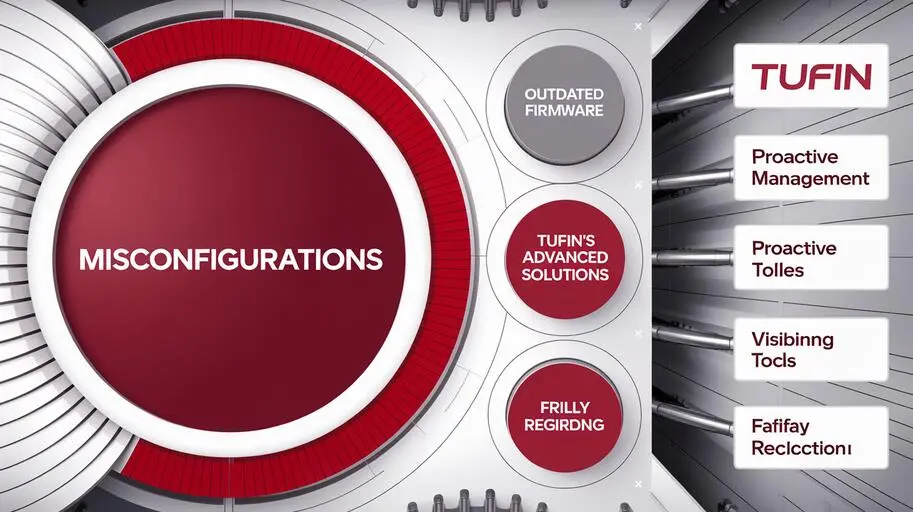
In today’s digital landscape, where cyber threats are becoming increasingly complex and sophisticated, the firewall remains a cornerstone of network security. However, misconfiguration and ineffective firewall rule management can turn this powerful tool into a vulnerability, opening doors for malicious actors. Imagine a situation: migrating to the cloud with existing firewall rules. A complex network infrastructure, thousands of firewall rules written by different teams at different times, with contradictions and redundancies, slowing down network traffic and creating security gaps. This is where Tufin comes to the rescue – a leading solution for firewall automation and security policy management, which allows organizations to optimize firewall rules, ensuring reliable protection and security compliance. In this article, we will take a detailed look at how Tufin helps solve these problems and strengthen your security system.
Why is Firewall Rule Optimization Important?
Before delving into the capabilities of Tufin, let’s understand why firewall rule optimization is crucial for a modern organization:
- Reducing the attack surface: Redundant and outdated firewall rules can create unnecessary opportunities for attackers. Optimization helps remove unused rules and restrict access to only necessary resources.
- Improving network performance: The more rules a firewall has to process, the more time it takes to analyze network traffic. Redundant rules can also lead to increased CPU and memory load on the firewall. Optimization allows you to speed up traffic processing, reduce latency, and improve overall network performance.
- Improving Compliance: Many industries are governed by strict security requirements, including firewall rules. Tufin helps organizations maintain Compliance by automating audit and reporting processes. Tufin provides ready-made report templates for various compliance standards.
- Reducing costs: Effective firewall rule management reduces labor costs for manual configuration and monitoring, and also reduces the risk of costly security incidents.
- Improving network visibility: Tufin provides centralized network visibility, allowing organizations to see how firewalls are configured and what traffic flows are allowed.
How does Tufin solve firewall management problems?
Tufin Security Policy Orchestrationprovides a comprehensive solution for firewall rule management, firewall automation, and ensuring security policy. Here are the key features that make Tufin an indispensable tool for technical specialists:
Centralized Management and Visibility
Tufin provides centralized management for heterogeneous firewall environments, including solutions from Check Point firewalls, Cisco ASA, Fortinet, Juniper Networks, Palo Alto Networks and others. This means you can manage all your firewalls from a single console, gaining complete network visibility and simplifying management tasks. Tufin uses APIs to integrate with firewalls. Managing network policies with Tufin becomes simple and convenient.
Automated analysis and rule cleanup
Tufin automatically analyzes firewall rules, identifying redundant, shadowing, and outdated rules using algorithms to identify duplicate, shadowing, and generalized rules. This allows organizations to conduct firewall rule cleanup, removing unnecessary rules and simplifying firewall configuration. Analyzing and cleaning up firewall rules using Tufin significantly reduces the risk of errors and increases the efficiency of the firewall.
Risk Modeling and Vulnerability Analysis
Before making changes to firewall rules, Tufin allows you to model potential risks and analyze vulnerabilities, such as rule compliance, access to a vulnerable server. This helps organizations make informed decisions about making changes to rules, reducing the risk of creating new vulnerabilities.
Automation of change management workflows
Tufin automates security change management, providing automated workflows for firewall rule change requests, approvals, and implementation. For example, a workflow might look like this: change request -> approval -> automatic implementation. This speeds up the change process, reduces the risk of errors, and ensures compliance with security policies. The product allows you to automate security policies, which significantly simplifies management.
Access Matrix
One of the key components of the Tufin Orchestration Suite is the access matrix. It provides a visual representation of who has access to what resources through firewalls. The access matrix is updated in near real-time mode. Using Tufin to build access matrices allows organizations to understand how traffic flows through the network and quickly identify potential security issues. The access matrix helps in:
- Visualization of network connections
- Identification of redundant access rights
- Analysis of compliance with the principle of least privilege
Integration with SIEM and CMDB
To ensure comprehensive security, Tufin integrates with SIEM (Security Information and Event Management) and CMDB (Configuration Management Database) systems. For example, Splunk, QRadar, ArcSight (SIEM) and ServiceNow (CMDB). Tufin sends information about rule changes to SIEM, enriching the data. Tufin Integration with SIEM and CMDB systems enables organizations to:
- Correlate security events with changes in firewall rules
- Enrich network configuration information with data from CMDB
- Improve detection and response to security incidents
Compliance Management and Reporting
Tufin Compliance provides automated reports and audits for compliance with regulatory requirements such as PCI DSS, HIPAA and GDPR. Tufin provides ready-made report templates for various compliance standards. This greatly simplifies the process of confirming compliance with security requirements and reduces the risk of fines for non-compliance. Ensuring security compliance with Tufin solutions becomes more efficient and less costly.

Technical aspects of firewall rule optimization with Tufin
Let’s move on to the more technical aspects of using Tufin for firewall rule optimization:
Detection of redundant rules
Tufin uses sophisticated algorithms to detect detection of redundant rules that duplicate the functionality of other rules or overlap with them. The detection process includes:
- Analysis of rule compliance
- Comparison of rule attributes (source, destination, service)
- Identification of rules with the same effect
Example: Rule A allows traffic from 10.0.0.0/24 to 192.168.0.0/24 on TCP port 80. Rule B allows traffic from 10.0.0.1/32 to 192.168.0.1/32 on TCP port 80. Rule B is redundant to rule A.
Analysis of expired rules
Tufin tracks the creation date and expiration date of firewall rules, identifying rules that are no longer relevant. This allows you to remove outdated rules and reduce the risk of using an outdated configuration.
Testing firewall rules
Before deploying new or modified firewall rules, Tufin allows you to conduct firewall rule testing in a controlled environment. It is possible to simulate traffic, check the impact on other rules. This helps to verify that the rules work correctly and do not have a negative impact on network traffic.
Firewall Rule Monitoring
After implementing firewall rules, Tufin provides firewall rule monitoring in real time, tracking their effectiveness and compliance with security policies. Rule parameters such as number of triggers, traffic changes are tracked. If deviations are detected, Tufin generates alerts, allowing you to respond quickly to problems.
Specific examples of using Tufin to optimize rules
To better understand how Tufin can help solve specific problems, consider a few examples:
Example 1: Reducing time for PCI DSS compliance audit
A company that processes credit card data must comply with PCI DSS requirements. Using Tufin, they can automate the firewall rule audit process, generating PCI DSS compliance reports in minutes, instead of days of manual work. Tufin Compliance greatly simplifies this process.
Example 2: Accelerating changes to firewall rules
A large organization with thousands of firewall rules spends a lot of time making changes to the rules. Using Tufin to automate change management workflows, they can reduce change time from days to hours. Security change management with Tufin becomes more efficient.
Example 3: Improving network security after a merger and acquisition
After the merger of two companies, it is necessary to combine network infrastructures and security policies. Using Tufin, they can quickly analyze and optimize firewall rules for both companies, identifying conflicts and redundant rules. Improving network security with Tufin after a merger happens faster and safer.
Benefits of using Tufin for firewall management
Implementing Tufin for firewall rule management provides organizations with many benefits, including:
- Increased security: Minimizing the attack surface, improving vulnerability detection, and rapidly responding to incidents.
- Reducing risk: Reducing the likelihood of configuration errors and unauthorized access.
- Reducing costs: Automating management and monitoring tasks, reducing labor costs and preventing costly security incidents.
- Improving performance: Optimizing firewall rules, speeding up network traffic processing, and improving overall network performance.
- Improving compliance: Automated reports and audits for compliance with regulatory requirements.
In conclusion, Tufin provides powerful tools and capabilities for firewall rule optimization and security policy management. From firewall automation and firewall rule analysis to building access matrices and integrating with SIEM and CMDB systems, Tufin helps organizations strengthen their security system, improve network performance, and ensure Compliance. If you are looking for a solution that can significantly improve your network security and simplify firewall management, Tufin is your choice.
Contact us today to learn more about how Tufin firewall rule optimization solutions can help you protect your organization.
FAQs on: Firewall Rule Optimization with Tufin
-
What is Tufin and how does it help in firewall management?
Tufin is a leading solution for firewall automation and security policy management. It helps organizations optimize firewall rules, ensuring robust protection and compliance with security requirements, and provides centralized network visibility.
-
Why is firewall rule optimization important?
Firewall rule optimization is important for reducing the attack surface, improving network performance, enhancing regulatory compliance, reducing costs, and improving network visibility.
-
What are the main features of Tufin for firewall management?
Key features of Tufin include centralized management and visibility, automated rule analysis and cleanup, risk modeling and vulnerability analysis, automated change management workflows, access matrix, integration with SIEM and CMDB, and compliance management and reporting.
-
What is the access matrix in Tufin and how does it help in ensuring security?
The access matrix in Tufin provides a visual representation of who has access to which resources through firewalls. It allows organizations to understand how traffic flows through the network and quickly identify potential security issues, and helps in analyzing compliance with the principle of least privilege.
-
How does Tufin integrate with SIEM and CMDB systems?
Tufin integrates with SIEM (Security Information and Event Management) and CMDB (Configuration Management Database) systems to correlate security events with changes in firewall rules, enrich network configuration information with data from the CMDB, and improve the detection and response to security incidents.
-
How does Tufin help comply with regulatory requirements (Compliance)?
Tufin provides automated reports and audits for compliance with regulatory requirements such as PCI DSS, HIPAA, and GDPR. This significantly simplifies the process of verifying compliance with security requirements and reduces the risk of non-compliance penalties.
-
What technical aspects of firewall rule optimization does Tufin provide?
Tufin provides detection of redundant rules, analysis of expired rules, firewall rule testing, and real-time firewall rule monitoring.
-
Provide examples of using Tufin to optimize firewall rules in real-world scenarios.
Examples include reducing the time for PCI DSS compliance audits, speeding up firewall rule changes, and improving network security after mergers and acquisitions.
-
What are the benefits of using Tufin for firewall management?
Using Tufin provides benefits such as improved security, reduced risk, cost reduction, increased performance, and improved regulatory compliance.
-
Who is recommended to use Tufin solutions for firewall rule optimization?
Tufin is recommended for organizations that are looking for a solution to significantly improve network security and simplify firewall management, especially those with complex network infrastructure and a large number of firewall rules.
